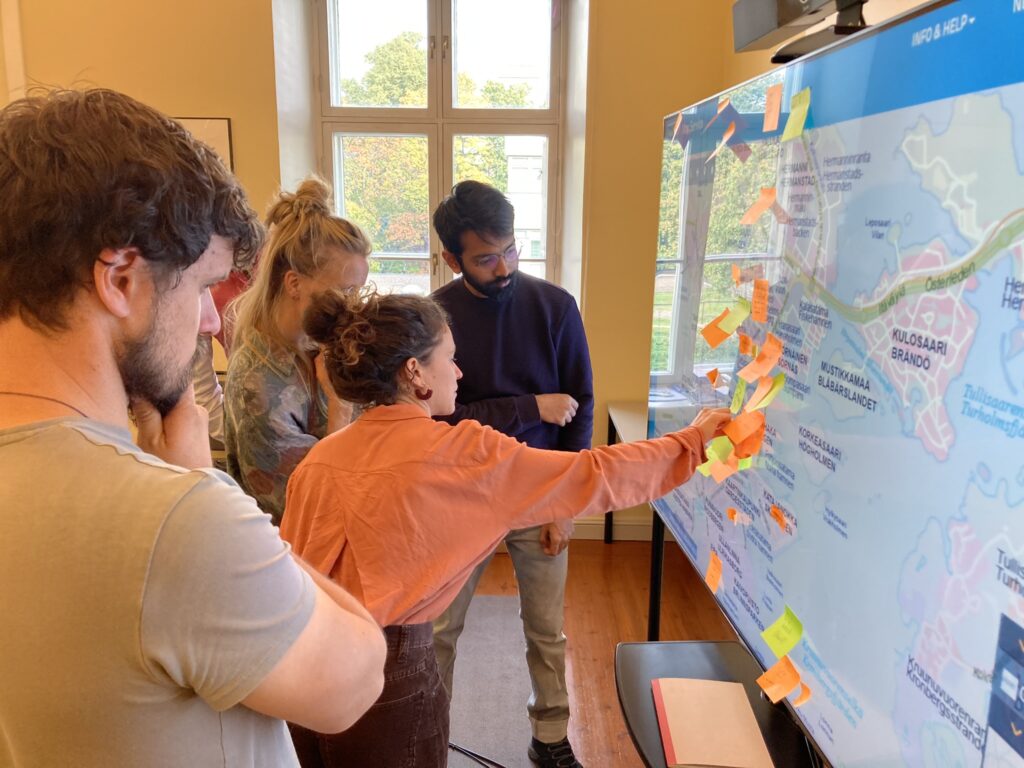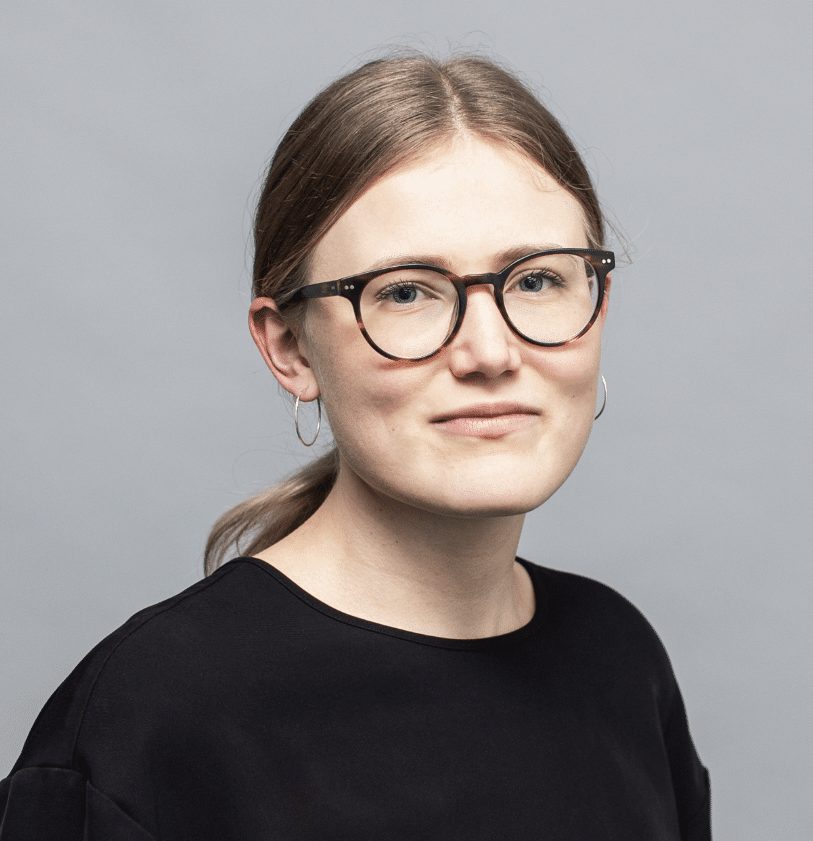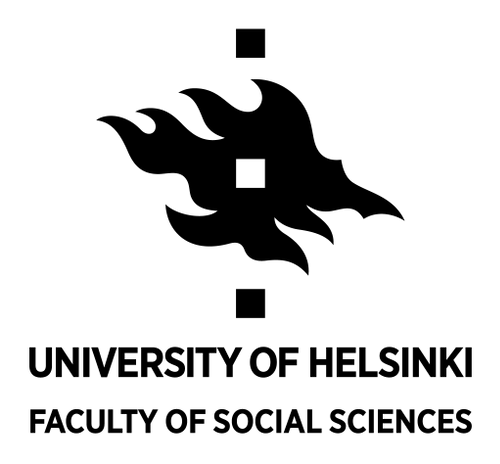By Emilia Laine & Elena Neri
In the last days of September, the Centre for the Social Study of Microbes organized its first PhD school that brought together a group of 14 microbial-minded doctoral students and 4 CSSM mentors. The 3-day experience allowed us to familiarize ourselves with each other’s research, reflect on theory and methods in microbial research, and immerse ourselves in multiple culinary and sensorial experiences.
As both of us have started our doctorate just a few months ago, this was our first ever PhD school and we really didn’t know what to expect. Reading other participants’ papers – which were mostly at an advanced stage – we felt insecure about our work and limited knowledge. By coincidence, we sat next to each other with a coffee on the first day, which gave us the chance to discuss these feelings from the beginning. We would therefore like to reflect on how we experienced the CSSM PhD school as freshly started doctoral students, who are just in the process of figuring out what it means to work in research and academia.
Slime mold and safer spaces
The PhD school was opened with an introduction to the CSSM by postdoctoral researchers Tiia Sudenkaarne and Jose Cañada, who used the concept of slime mold as a metaphor to describe the centre’s operational structure and working environment. Slime mold, seen as a polycentric and many-headed organism, represents a low-hierarchy organizational model that brings together academics from diverse disciplinary backgrounds. It encourages us to think beyond traditional human/nonhuman distinctions, challenging established assumptions about how people are expected to exist in academic spaces. This shift in perspective emphasizes collaboration over competition, as Choy et al. (2009) suggest when they describe collaboration as the “needed antidote to the lonely competition of the academy”.
The slime mold metaphor was then leveraged as an entry point to discuss safer spaces. The CSSM is currently developing its safer space guidelines, which emphasize fostering a culture of empathy and accountability while striving to dismantle structures of oppression. Rather than just setting expectations for a safe working environment, the safer space guidelines additionally encourage us to reflect on how to show up in academic spaces in a (re)generative and caring manner, with an active commitment to inclusivity and social justice. We were pleased to see how these guidelines came to life during our shared time in Helsinki, as we felt that a philosophy of care permeated our practices and relations within and outside the classroom. We can say that we really felt like slime mold, in the sense that we were part of a non-hierarchical diverse group, open to merge and grow from different sides and in different ways.
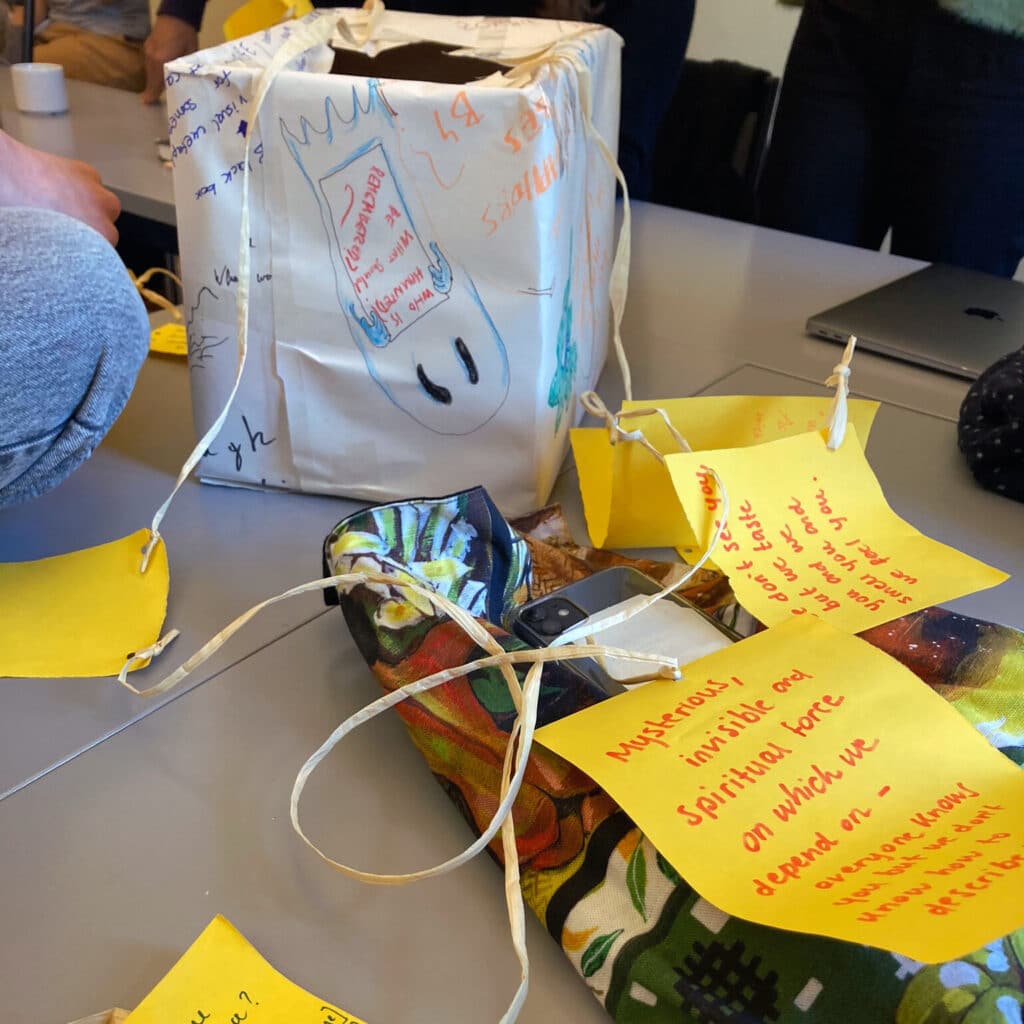
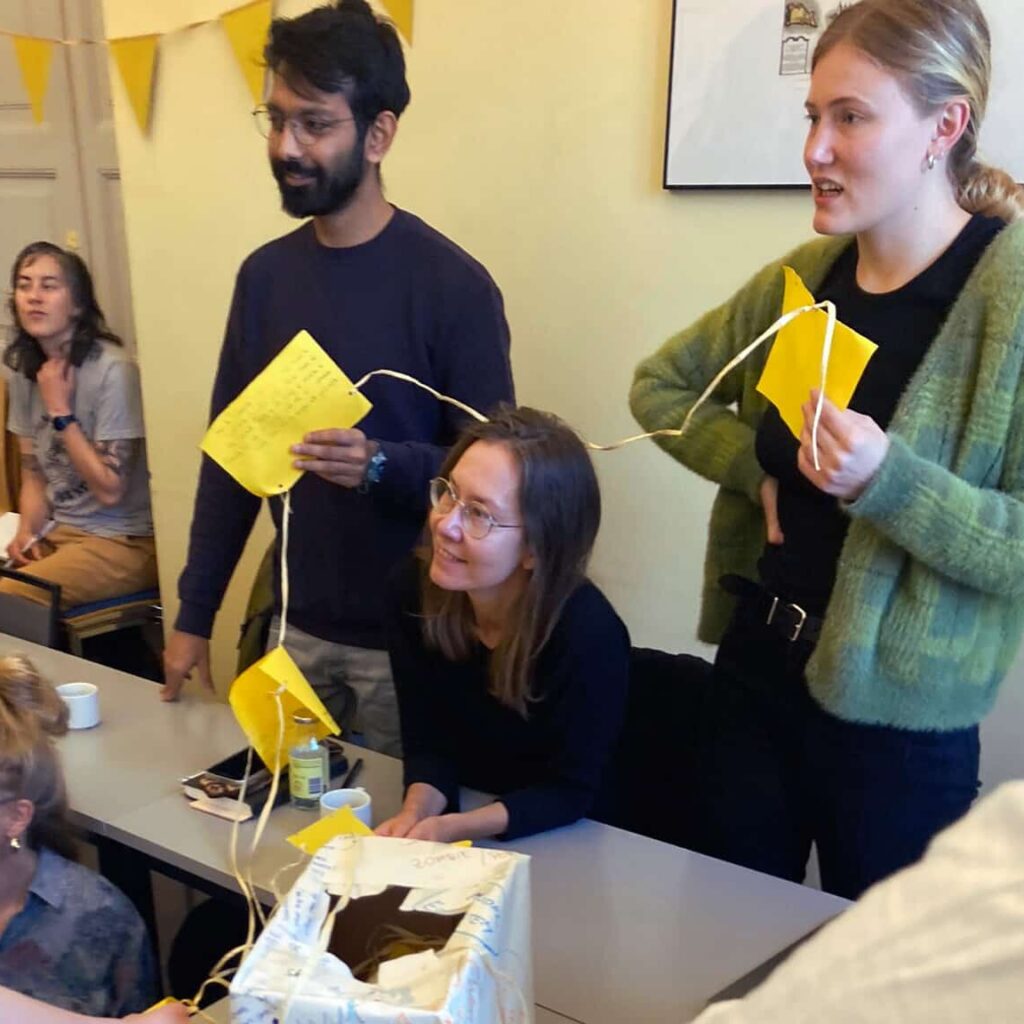
Researching microbes: theory and methods
The session continued with a comprehensive overview of the genealogy of and various academic contributions to the social study of microbes by Salla Sariola, director of the CSSM. Following these presentations, we all introduced our research: we heard about happiness probiotics in Taiwan, local knowledge of microbes in India, cellular agriculture in Finland, ontologies of bacteriophages and milk, and so many other amazing projects. We were inspired by the diversity of research topics and disciplines represented in the program. Indeed, the PhD school organizers noted that based on the projects presented, the field of social studies of microbes seems to be expanding to novel areas.
Then it was the time for the part of the school that we were most worried about – discussing our work-in-progress in smaller groups with people that were mostly much more experienced than us. However, we soon understood that our work and our comments were valued and taken seriously. Our impression was that everyone – mentors and participants alike – was genuinely interested in and encouraging of each other’s work. We were reminded that in the study of microbes, “everyone speaks from a position of knowledge and ignorance” (Greenhough et al., 2018). In other words, in addition to everything that we were learning, we had a lot to give to this space as well. It was also very useful to practice being a discussant and “defending” our papers, but we were grateful to be able to do so in a small, “safe” group. Besides practicing these concrete academic skills, the small group discussions provided a great opportunity to better understand the different stages of article writing. Usually, when we read published academic articles, all the earlier stages of the writing process are invisible to us, from the early phases of ideation to the multiple rounds of article drafts, commenting and reviewing. It was encouraging to see how, even researchers with multiple publications, had to go through the same process, and needed feedback for their work just like we did for ours. We also received great ideas on how we can develop our work going forward.
As the last activity, we participated in a workshop about microbe theory and methods. Split into two groups – one group working on questions around theory and the other around methods of microbial research – we had the opportunity to discuss our learnings and represent the outcomes of our conversations in whatever form we wanted. Talking about the ways and challenges of using microbes as frameworks and tools for research, we reflected on how microbe knowledge can pose alternatives to the imposing laboratory narrative of science. The concept of proxy made us think about how we often need agents (such as soil) to think about microbes, but also how microbes have become themselves a proxy to conceptualize the socio-materiality of the world. Microbes – as “pleomorphous” beings with different forms and functions (Raffaeta, 2021) – lend themselves as theoretical concepts as well as methods for doing research. Although we were divided into these two groups, we realized that, in the study of microbes, theory and methods are entangled and often inextricable.
We appreciated how the workshop gave us a real opportunity to work creatively across our differences, allowing collaboration, mutual “contamination” and “horizontal exchanges” (Tsing, 2015; Greenhough et al., 2018). When discussing how the school went overall, everyone else seemed to have similar opinions to ours, having really enjoyed the balance between academic discussions and more hands-on workshops and activities.
Learning beyond traditional academic settings
On the final day, the two groups presented their theory and method workshop activities. We were amazed by how a few hours of collaborative work could give birth to such exciting outcomes, which included a Black Box of microbe theory and a smell map of Helsinki! We were also mesmerized by the Microbimpro video installation created by the CSSM artist-in-residence Oona Leinovirtanen. Exploring the connection between gut feeling and improvisation, Oona’s work inspired us to speculate on the possibility of gut microbes speaking and acting through our bodies when we surrender to improvisation. The installation showed how the ways in which we can engage with the social study of microbes are multiple and go well beyond “traditional” academic research. It is important to come together and share, learn and combine all these approaches in order to keep challenging and broadening our knowledge and perspectives. The study of microbes should in fact be horizontal and dynamic, “bringing together rather different forms of empirical research, and asking whether they might inform each other in new ways” (Landecker, 2019).
We seemed to agree that doing more creative, hands-on collaborative activities rather than just discussing our academic papers allowed us to think about our research heterogeneously, both in terms of theory and methods. It also prompted reflections on how we could bring our work outside of the academic setting, making it accessible and engaging to different audiences and communities. Greenhough et al. (2020) suggest that we think about how diverse publics engage with the microbiome and how certain narratives and forms of knowledge gain credibility and circulate amongst these publics, highlighting the importance of expanding this field of study both in terms of research and dissemination methods.
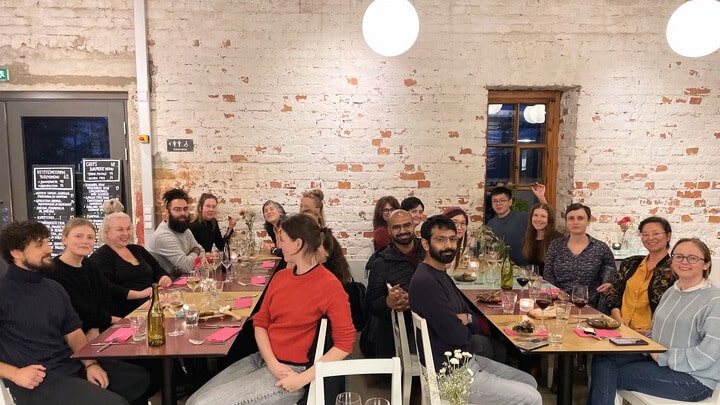
Extra-curricular activities such as dinners, beers and walks around Helsinki really allowed us to get to know each other and each other’s work, overcoming barriers and dynamics that sometimes can form within the classroom, especially between students and mentors. Some visiting doctoral students even came to show their support for the ongoing university occupation taking place in the main building and got to learn about the past and current political situation in Finland. This truly made us reflect on how the PhD school created a real “slime mold safer space”, where relationships of care and commitment to social justice went well beyond our time in the classroom.
To conclude with one of the most memorable moments, we would like to bring you back to our shared dinner on Lonna Island, where we were served a menu consisting of local seasonal ingredients such as mallard, lingonberries and cabbage. However, for many, the highlight of the meal was the dessert: a mushroom cep (boletus edulis) ice cream. We thought that it represented well how microorganisms – such as mushrooms and bacteria – are multiple, mysterious and pleomorphous, and how species can merge and entangle in different ways. Microbes are outside and within us, we can’t necessarily see them, but we can “feel” them… and, at times, they are delicious! 😉
References
Choy, T. K., Faier, L., Hathaway, M. J., Inoue, M., Satsuka, S., & Tsing, A. (2009). A new form of collaboration in cultural anthropology: Matsutake worlds. American Ethnologist, 36(2), 380-403.
Greenhough, B., Dwyer, A., Grenyer, R., Hodgetts, T., McLeod, C., & Lorimer, J. (2018). Unsettling antibiosis: how might interdisciplinary researchers generate a feeling for the microbiome and to what effect? Palgrave Communications, 4(1), 1-12.
Greenhough, B., Read, C. J., Lorimer, J., Lezaun, J., McLeod, C., Benezra, A., … & Wills, J. (2020). Setting the agenda for social science research on the human microbiome. Palgrave Communications, 6(1), 1-11.
Landecker, H., 2019. Antimicrobials before antibiotics: war, peace, and disinfectants. Palgrave Communications, 5(1).
Raffaetà, R. (2021). Microbial antagonism in the Trentino Alps: negotiating spacetimes and ownership through the production of raw milk cheese in Alpine high mountain summer pastures. Current Anthropology, 62(S24), S323-S332.
Tsing, A. L. (2015). The mushroom at the end of the world: On the possibility of life in capitalist ruins. Princeton University Press.
